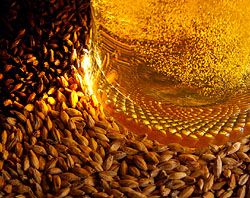 Beer is one of the most popular alcoholic beverages in the world, and it has innumerable health benefits. It is a rich source of magnesium, potassium, phosphorus, selenium, and the B complex group of vitamins. Because of the fact that it is loaded with nutrients, beer has earned the title of ‘liquid bread’.
Beer is one of the most popular alcoholic beverages in the world, and it has innumerable health benefits. It is a rich source of magnesium, potassium, phosphorus, selenium, and the B complex group of vitamins. Because of the fact that it is loaded with nutrients, beer has earned the title of ‘liquid bread’.
With the all-grain brewing method, beer is made directly from malted barley grain. No malt extract is used in this process. All the brew’s malty character comes from the barley, itself. Here are the basic steps:
- Milling: The first step is to crush the malted barley grain. This is done with a grain mill. All you are try to do it break up the outer husk of the grain. It is not necessary nor desirable to process it any more than this.
- Mashing: This consists of mixing the milled grain with hot water and letting it mash/steep. The natural enzymes that are in malted barley convert the starch which is present in the milled grains into fermentable sugar.
- Sparging: During this process, the sugars are rinsed out of the mash with the help of hot water. Batch sparging and continuous sparging are the two commonly used methods and each has its own pros and cons.
- Boil: Finally the wort is boiled in a brew kettle. Hops are added, which impart an element of bitterness. Beer hops neutralize the sweetness of the malt and make it taste slightly bitter. A wide range of beers are available on the market and the ones which are rich in hops having high alpha acids are comparatively bitter than the ones which have a low concentration of alpha acids.
- Fermentation: The wort is cooled down, and beer yeast is added, which ultimately transforms the wort into beer. The fermentation normally lasts about 5 days. The exception is when a lager beer yeast is used. Then the fermentation can potentially be drawn out for months.
- After The Fermentation: Once the fermentation is complete, the beer is packaged into kegs, casks, aluminum cans, or bottles etc. In the case of homebrew, beer bottles or soda canisters are the preferred norm.
Barley and wheat are the most commonly used brewing grains. However, other grains such as rye are also used in making beer and the flavor of the beer largely depends on the type of grain used.
________________________________________________________
Read More About All-Grain Brewing And Other Beer Topics,
FREE EMAIL NEWSLETTER:


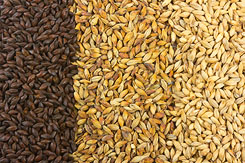
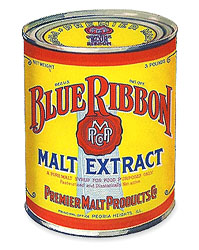 My dad used to make home brew in the 50s and 60s with Pabst Blue Ribbon malt. A website directed me to you for the malt. I don’t find any of your malts with a reference to Pabst Blue Ribbon. Can you help me please! Thanks in advance.
My dad used to make home brew in the 50s and 60s with Pabst Blue Ribbon malt. A website directed me to you for the malt. I don’t find any of your malts with a reference to Pabst Blue Ribbon. Can you help me please! Thanks in advance.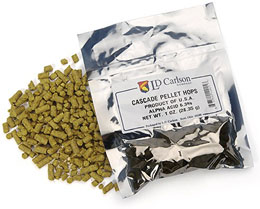
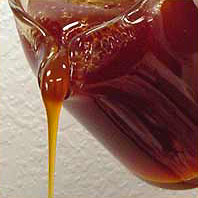
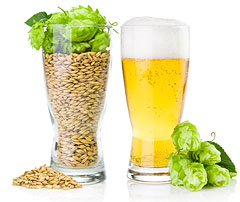 Beer is that one magic drink that none of us can stay without. Moreover, why would anyone even think of staying away from it? It is one of the lightest yet most soothing drinks available on the market.
Beer is that one magic drink that none of us can stay without. Moreover, why would anyone even think of staying away from it? It is one of the lightest yet most soothing drinks available on the market.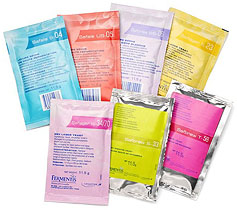
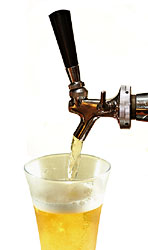 In olden times, beer was stored in wooden casks but in the modern scenario, people mostly use beer kegs. For those who have just stepped in home brewing or are novice in this field, some tips on
In olden times, beer was stored in wooden casks but in the modern scenario, people mostly use beer kegs. For those who have just stepped in home brewing or are novice in this field, some tips on  Beer is an all time favorite drink for most people around the globe. The various unique characteristics of beer make us inclined towards it and want it all the more. What becomes irritable is the same droning taste that happens to be in every large beer company. The best way to get away with this monotony is to learn to brew your own beer.
Beer is an all time favorite drink for most people around the globe. The various unique characteristics of beer make us inclined towards it and want it all the more. What becomes irritable is the same droning taste that happens to be in every large beer company. The best way to get away with this monotony is to learn to brew your own beer.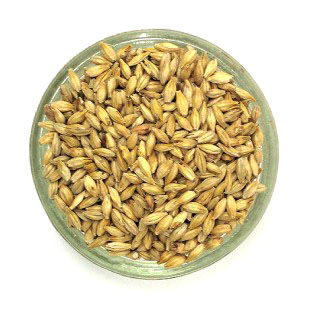 Briess malt
Briess malt